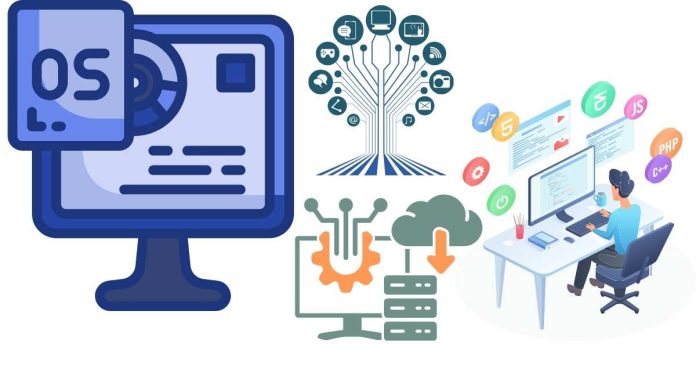Operating systems are the backbone of computer functionality, managing hardware resources and providing services for applications. AIX (Advanced Interactive eXecutive) and Linux are two popular operating systems widely used in the IT world, but they serve different purposes and cater to different user groups. Let’s explore their differences in detail.
Overview of AIX
AIX (Advanced Interactive eXecutive) is a proprietary UNIX-based operating system developed by IBM. It is specifically designed to run on IBM’s Power Systems and is known for its stability, scalability, and robust security features. AIX is often used in enterprise environments for critical applications such as databases, ERP systems, and large-scale data processing.
Key Features of AIX:
- High availability and disaster recovery capabilities.
- Advanced virtualization through PowerVM.
- Enhanced security features, such as Trusted AIX and Role-Based Access Control (RBAC).
- Optimized for IBM hardware like Power servers.
Overview of Linux
Linux is an open-source, UNIX-like operating system kernel developed by Linus Torvalds in 1991. Over time, it has evolved into a family of operating systems, including distributions like Ubuntu, Red Hat Enterprise Linux (RHEL), CentOS, and Debian. Linux is highly versatile and runs on a wide range of hardware, from servers and desktops to embedded systems.
Key Features of Linux:
- Open-source and customizable.
- Broad hardware compatibility.
- Large community support and extensive documentation.
- Lightweight versions available for small devices and low-resource systems.
Key Differences Between AIX and Linux
| Aspect | AIX | Linux |
|---|---|---|
| Ownership | Proprietary OS by IBM. | Open-source and community-driven. |
| Hardware Dependency | Runs only on IBM Power Systems. | Runs on various hardware architectures. |
| Cost | Requires licensing from IBM. | Free for most distributions; some, like RHEL, have licensing costs for enterprise use. |
| Customizability | Limited customization due to its proprietary nature. | Highly customizable and modifiable. |
| User Base | Primarily large enterprises and corporations. | Used by enterprises, developers, and individuals. |
| Security Features | Built-in enterprise-grade security, like Trusted AIX and RBAC. | Strong security features but vary across distributions. |
| Virtualization | Uses IBM’s PowerVM for virtualization. | Uses solutions like KVM, Docker, or VMware. |
| Updates | Updates are managed by IBM. | Updates vary by distribution and are community-driven. |
| Ease of Use | Requires specialized knowledge; suitable for IT professionals. | User-friendly distributions (like Ubuntu) available for beginners. |
| Support | Official IBM support with service agreements. | Community support and paid support options for enterprise distributions. |
Use Cases of AIX and Linux
AIX:
- Enterprise Applications: Ideal for running mission-critical workloads like Oracle databases, SAP systems, and financial applications.
- High Availability: Used in environments requiring uptime, such as banking and healthcare industries.
- IBM Ecosystem: Designed to work seamlessly with IBM hardware and software solutions.
Linux:
- Web Servers: Popular choice for hosting websites and web applications due to its flexibility and lightweight nature.
- Development and Testing: Widely used by developers for coding, testing, and deploying software.
- Personal Use: Many Linux distributions are designed for everyday users, such as Ubuntu and Fedora.
- Cloud Computing: Heavily used in cloud platforms like AWS, Azure, and Google Cloud.
Pros and Cons
AIX Pros:
- Highly stable and reliable.
- Excellent support for enterprise workloads.
- Advanced security features and disaster recovery options.
AIX Cons:
- Expensive licensing and hardware costs.
- Limited to IBM Power Systems.
- Requires specialized expertise to manage.
Linux Pros:
- Free or low-cost solutions available.
- Versatile and runs on a wide range of devices.
- Open-source and customizable.
Linux Cons:
- Inconsistent support for proprietary applications.
- Enterprise-grade security and scalability may require additional tools or configurations.
AIX and Linux are both powerful operating systems, but they cater to different needs. AIX is tailored for enterprises that rely on IBM’s hardware and require high performance, reliability, and security. On the other hand, Linux is a more versatile, cost-effective, and customizable option suitable for a broad spectrum of users, from individuals to large organizations.
The choice between AIX and Linux ultimately depends on your specific requirements, budget, and hardware infrastructure. While AIX is a premium solution for enterprise workloads, Linux offers flexibility and innovation in both personal and professional environments.


